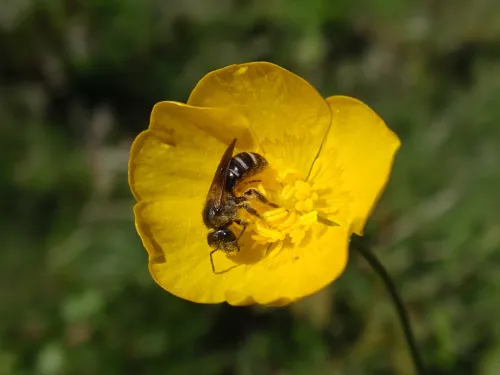
Introduction to Solitary Bees
There are around 250 species of solitary bee. Find out how to identify them and where to find them, and learn about their ecology.
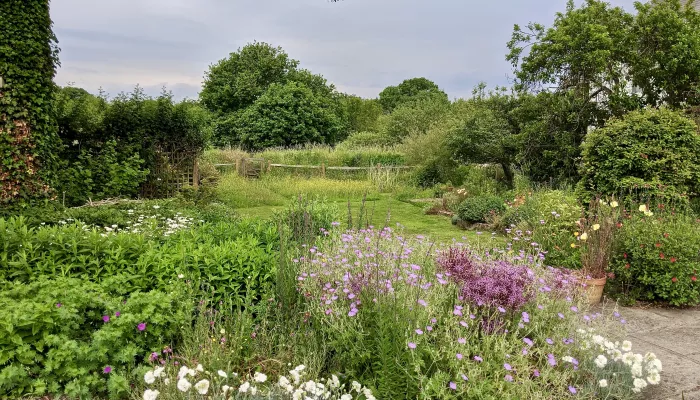
Erysimum or perennial wallflowers are fantastic, particularly ‘Bowles Mauve’, as it has a good flush of flowers in spring. It then keeps going, though with fewer flowers, until the first frost. We love it because it is always alive with insects and enlivens our garden during its rather green phase between spring and summer.
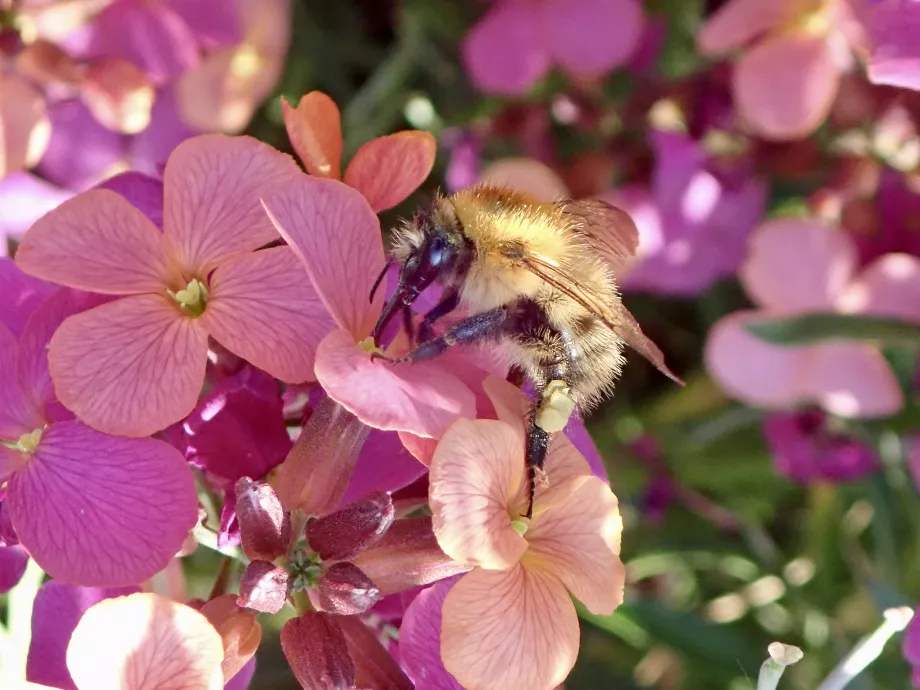
Common carder bee on an erysimum which we think may be ‘Sweet Sorbet’ - P. Brook
Early flowering hardy geraniums are very popular with the bees in our garden, particularly one that we think is geranium robustum. This may be partly because it has grown into an enormous plant, about 1.5 metres across. We have noticed that insects are really drawn to large plants or drifts of the same plant which they can then work across with minimum effort.
In our garden, geranium robustum is a short-lived perennial but seeds fairly freely and is tolerant of being transplanted when small. Thankfully we have always found a seedling somewhere as we haven’t seen it for sale since buying our first plant years ago at a small nursery in Wales.
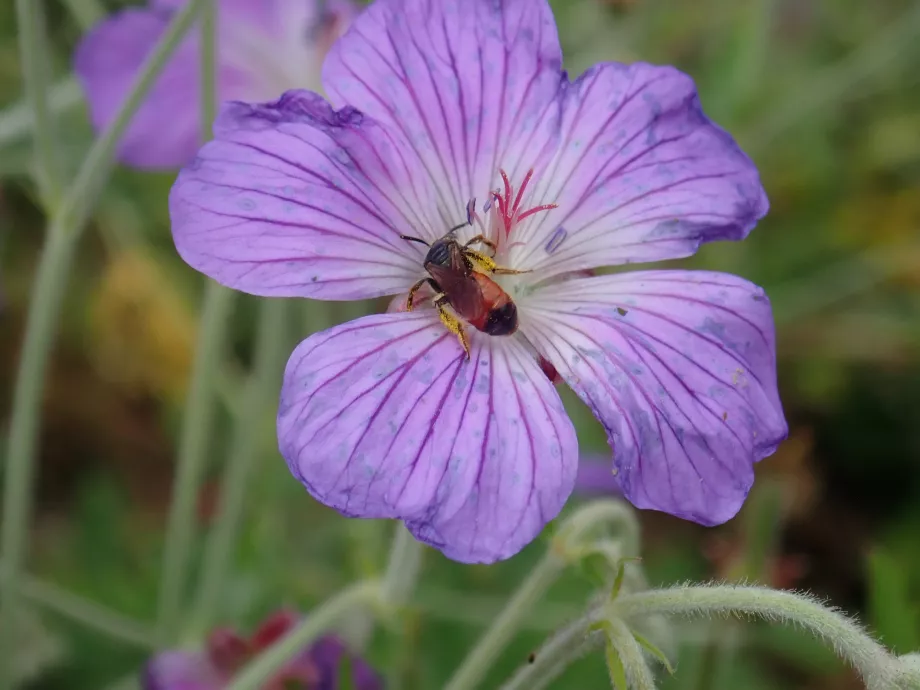
Red girdled mining bee on what is probably geranium robustum - P. Brook
Foxgloves are excellent for long-tongued insects such as the garden bumblebee. It is important to provide flowers of different shapes to cater to the needs of a wide range of insects. Foxgloves need a little care in our garden if they are to be spared by the slugs. Self-seeded plants generally survive, perhaps because they are naturally in an ideal spot. If we put them in as plants, we ensure they are a good size and they generally survive the slugs.
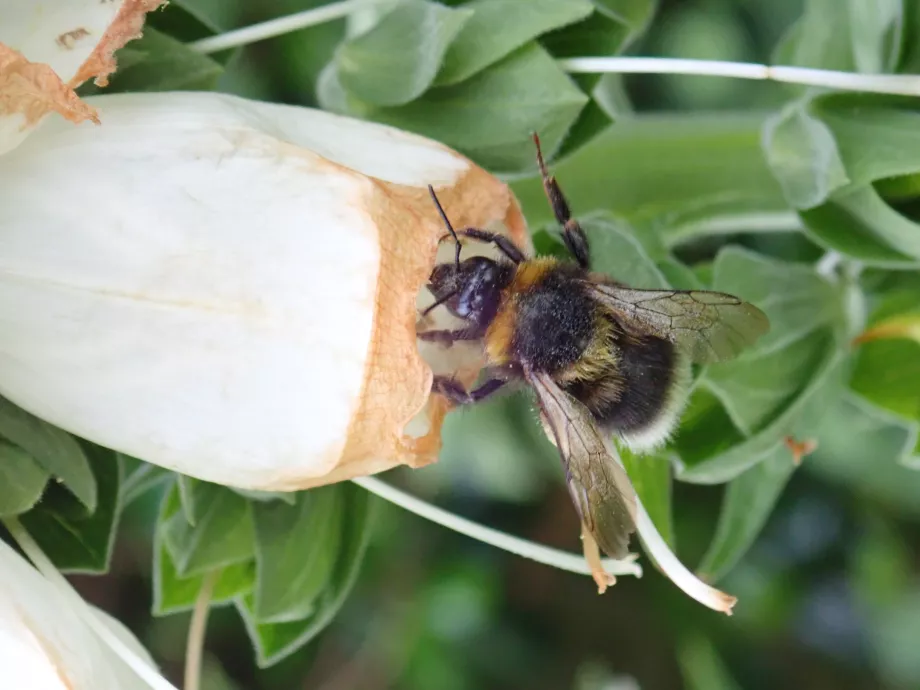
Garden bumblebee on foxglove - P. Brook
Allium provide early summer colour, and bees seem to love them! We have found that some allium are rather thuggish, even in the wilder parts of our garden. Perhaps our favourite allium is ‘Purple Sensation’ which is tough but not an over-enthusiastic spreader, and we can always find bees on its vibrant flowers.
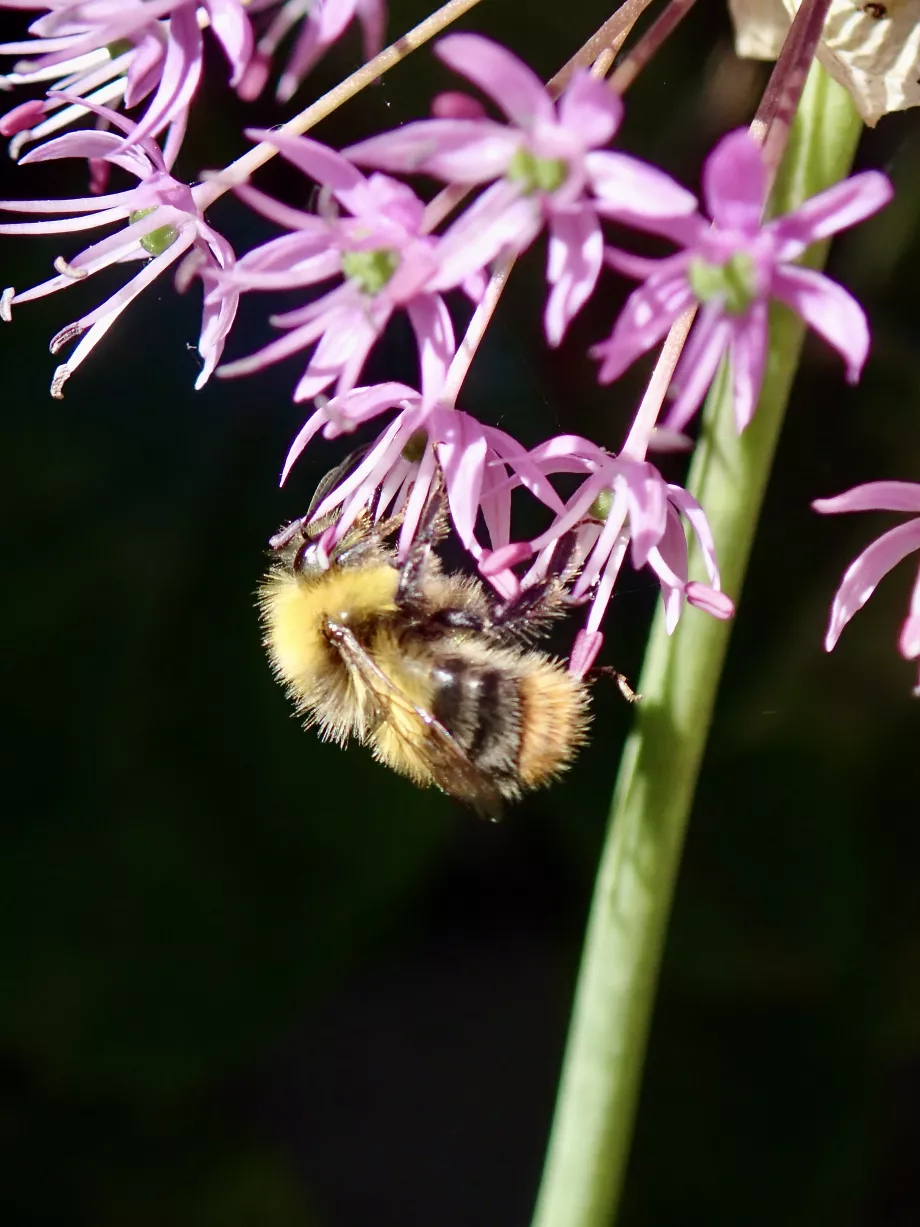
Male early bumble bee on allium ‘Purple Sensation’ - P. Brook
All the plants we have mentioned so far are on the Royal Horticultural Society’s Plants for Pollinators list. We cannot find Welsh poppies on the list but in our garden, they seem to be very popular with bees. We love this plant because its beautiful flowers illuminate dry and dark corners where nothing else will grow, and it also copes with being baked in our sunniest borders.
Most are yellow but we have some vibrant orange ones too, self-seeded progeny of a ‘Frances Perry’ that we bought many years ago. They are a brilliant slug-resistant alternative to Iceland poppies which would be totally devoured in our garden.
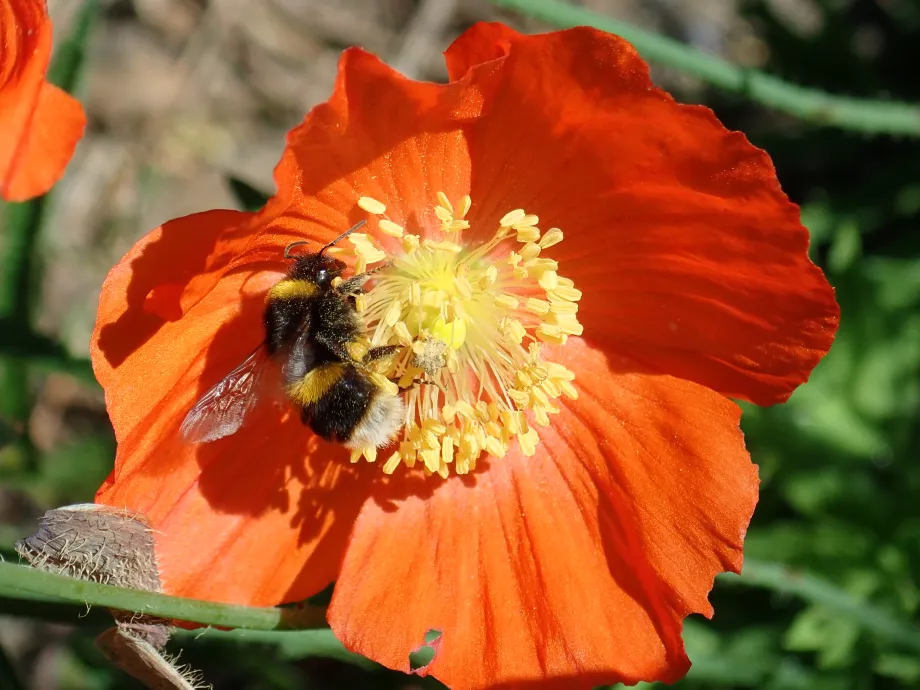
Buff tail bumble bee on Welsh poppy descended from ‘Frances Perry’ - P. Brook
We find that all these plants are good for carrying the garden from spring to summer by providing colour to delight us, and provide a good supply of pollen and nectar for insects, particularly bees. We hope you have enjoyed seeing our selection and might be tempted to make room for some of them in your own garden.

There are around 250 species of solitary bee. Find out how to identify them and where to find them, and learn about their ecology.
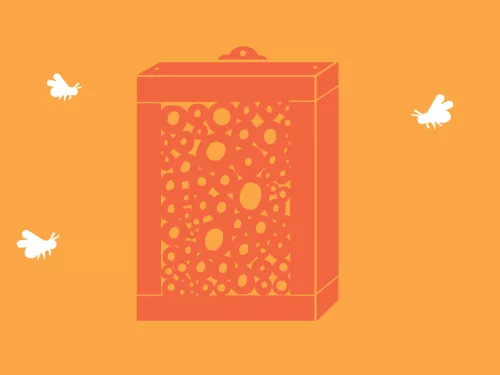
Solitary bees are important pollinators and a gardener’s friend. Help them by building a bee hotel for your home or garden and watch them buzz happily about their business.
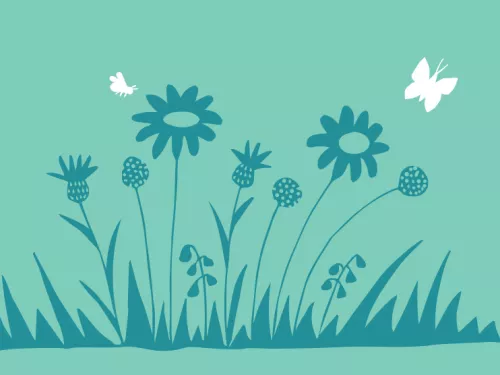
Whether it's a flowerpot, flowerbed, wild patch in your lawn, or entire meadow, planting wildflowers provides vital resources to support a wide range of insects that couldn't survive in urban areas otherwise. It is also a great way of avoiding tools such…